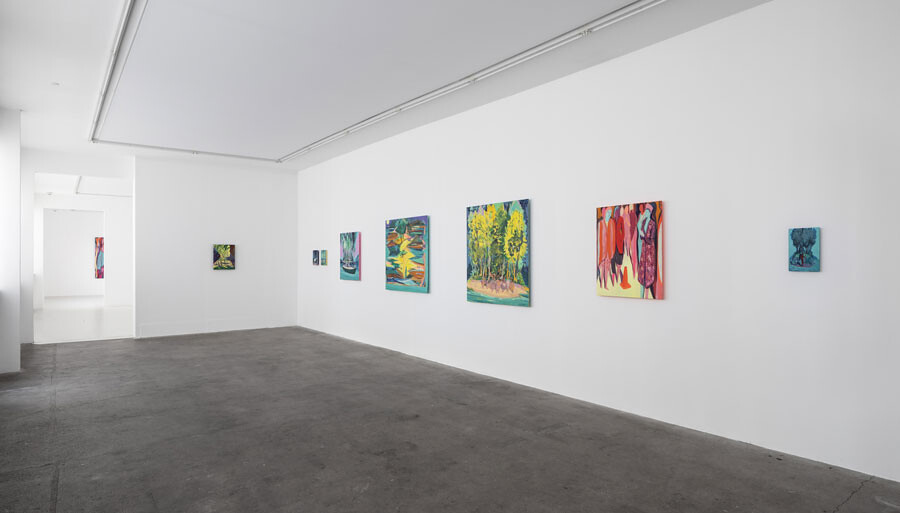One Island Many People
November 2, 2018–January 12, 2019
Flaesketorvet 85A
1711 Copenhagen
Denmark
Hours: Tuesday–Friday 1–6pm,
Saturday 11am–4pm
T +45 33 93 42 21
bjerggaard@bjerggaard.com
We live in age of dystopian deluge. At a time when “The Resistance” battles a comic book villain President Donald Trump who deploys, to use his political advisor Kellyanne Conway’s bogus term, “alternative facts” to slay the dragon of so-called “fake news,” the distressing perception that we are living through an authoritarian nightmare crossed with a misogynist theonomy has become, well, depressingly popular.
In preparation for the coming end times, books like George Orwell’s 1984, Philip Roth’s The Plot Against America and Margaret Atwood’s The Handmaid’s Tale are flying off the shelves, while TV series and movies like The Leftovers, Get Out and The Hunger Games peddle ever grimmer apocalyptic narratives. To better understand the current dystopia fatigue, we would do well to take a page from the Romantic poet William Wordsworth. Like other combustible transnational periods, say, the dawn of the Industrial Revolution and the street-fighting late 1960s, today the world is arguably “too much with us.”
These and other fugitive thoughts occurred to me as I surveyed more than a dozen paintings by the French-born, California-raised, New York-based painter Jules de Balincourt. Arrayed around the walls of his Brooklyn studio were various examples of what the artist has described as “admittedly escapist” travel pictures. Oil on panel paintings, they depict, among other dreamy images, tropical beach scenes, views of Robinson Crusoe-like islands, a sailing boat, jungle landscapes that morph cinematically into faces (as in a film montage) and groups of figures toing and froing across dark-and-acid-colored terrains like tribes of concertgoers searching for a ride home (alternately, they could be refugees).
A long time purveyor of conflictingly fetching and ominous views of cultural anomie, de Balincourt has long been capable of acing the F. Scott Fitzgerald IQ test. An artist who excels at holding two opposed ideas in the mind at once, he has intuitively and steadily transferred his own estrangement from and affection for worldly things onto his neo-romantic paintings. His latest works arrive like hot flashes: humid first impressions subside into sultry reflection, while avoiding portentousness’ fever dream. In Nietzsche’s formulation, de Balincourt’s repeated views of Eden suggest that, “in heaven, all the interesting people are missing.” Or as the artist himself put it to me: “I am interested in painting utopian scenes that play out in a dystopian place.”
De Balincourt’s paintings start out as abstract shapes of color pregnant with “apparitions” and “road trips.” These emerge from within fields of thinned out hues that, generatively speaking, make up the first layers of his handsome compositions. “By the second or third session,” he says, “I usually see an image, which I follow.” In practical terms, de Balincourt’s approach with paint recalls that of Michelangelo in sculpture. The latter famously declared that the final form of his sculpture was already contained within his marble block before he put chisel to stone. De Balincourt might easily affirm something similar. The Ozymandias-like blue female head that dominates The Promise, for instance, can be said to be immanently contained within de Balincourt’s colorful washes. Ditto for the centrally placed silhouetted figures that inhabit his shipwrecked island in They Found Refuge.
De Balincourt’s latest raft of paintings, he confesses, have a great deal to do with a recent life project. Not at all coincidentally, the artist is in the midst of building a studio and artists retreat in the coastal town of Malpais in Costa Rica. Despite the town’s dramatically baleful name—in Spanish the words “mal país” mean “bad country”—the artist is currently consumed by a not so metaphorical escape from the world’s advancing dystopian churn and what he calls “the American art world bubble.” His paintings, especially the lush sailboat image that dominates Adrift and his picture of several beached groups of half-dressed figures he has titled Those Who Left and Those Who Stay, suggest dialectical rather than contradictory impulses. If his paintings visualize the wish to be elsewhere, they also channel loads of anxiety about what is left behind.
According to art lore, the dinner held in honor of Gauguin before he left for Tahiti included a recitation of Edgar Allen Poe’s “The Raven.” Later, the painter included an image of that “bird of the devil” in an uneasy portrait of his supine vahiné, or Tahitian wife, which he titled Nevermore (1897). De Balincourt’s recent oils partake of a similar tension. They invoke both paradises gained and lost, as well as landscapes and figures that toggle between suggesting a headlong flight into Egypt and the promise of new beginnings. But one takeaway, above all others, emerges from careful study of de Balincourt’s latest idealistic beauties. These are not pictures made so much to escape reality. They are painted to consider staying.
By Christian Viveros-Fauné, Brooklyn, October 2018



